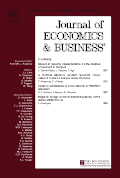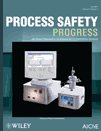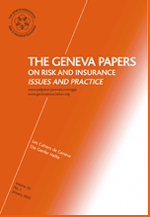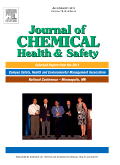
Journal of Operational Risk
Scope & Guideline
Bridging Theory and Practice in Operational Risk
Introduction
Aims and Scopes
- Operational Risk Measurement and Management:
The journal delves into methodologies for quantifying operational risk, including the application of statistical models, machine learning, and extreme value theory to better understand potential loss scenarios. - Impact of Technology on Risk Management:
A significant focus on how technological advancements, such as fintech and information technology, influence operational risk management practices, including risk mitigation and auditing processes. - Regulatory Frameworks and Compliance:
Explores the implications of regulations on operational risk, including compliance strategies and the effects of regulatory changes in different banking environments. - Behavioral and Organizational Aspects of Risk:
Investigates how organizational culture, governance structures, and internal audit practices affect operational risk management and the overall risk landscape. - Sector-Specific Studies:
The journal features research on operational risk pertinent to specific sectors, particularly banking, with examinations of regional differences and unique challenges faced by institutions.
Trending and Emerging
- Integration of Machine Learning and AI in Risk Management:
There is a growing emphasis on the use of advanced analytics, including machine learning and AI, to enhance the categorization and prediction of operational risk events, marking a significant trend towards data-driven decision-making. - Impact of Cyber Risk on Operational Frameworks:
Research focusing on cyber risk, including definitions, classifications, and its integration into broader operational risk frameworks, has gained traction, underscoring the increasing importance of cybersecurity in risk management. - Post-Pandemic Risk Management Strategies:
The journal has seen an uptick in studies analyzing the shifts in operational risk management practices resulting from the Covid-19 pandemic, highlighting the need for resilience and adaptability in risk frameworks. - Cross-Sectoral Risk Analysis:
Emerging studies that examine operational risk across different sectors, including non-financial industries, are on the rise, indicating a broader application of operational risk principles beyond traditional banking. - Behavioral Insights in Risk Management:
There is an emerging focus on the behavioral aspects of risk management, including how organizational culture and board diversity influence risk-taking and governance structures.
Declining or Waning
- Traditional Risk Assessment Models:
There is a noticeable decrease in papers focusing on conventional risk assessment models, suggesting a shift towards more innovative and complex methodologies that incorporate modern data analytics and machine learning. - Generalized Economic Impact Studies:
Research that broadly examines economic impacts of operational risk without specific contextual focus is less prevalent, indicating a trend towards more targeted studies with actionable insights in specific sectors. - Descriptive Risk Analysis:
Studies that merely describe operational risk without offering prescriptive methodologies or solutions have become less common, reflecting a preference for research that provides concrete frameworks or tools for practitioners.
Similar Journals

International Journal of Financial Studies
Connecting scholars and practitioners in finance.The International Journal of Financial Studies is a premier publication dedicated to advancing the field of finance through open-access research. Published by MDPI based in Switzerland, this journal offers researchers, professionals, and students a platform to disseminate their findings in an accessible format since its establishment in 2013. With its ISSN of 2227-7072 and a commendable impact reflected in its Q2 ranking in finance, it occupies an influential position among finance-related journals, as evidenced by its 65th percentile rank in Scopus. The journal encompasses a wide array of topics in finance, making it essential reading for those seeking to stay abreast of current research trends and methodologies. As an open-access journal, all articles are freely available, significantly enhancing the visibility and reach of published studies, which is crucial for fostering collaboration and innovation within the global financial community. Published continuously until 2024, the International Journal of Financial Studies is not just a source of knowledge; it is a critical contributor to the progression of financial scholarship.

JOURNAL OF ECONOMICS AND BUSINESS
Exploring Contemporary Issues and TrendsJOURNAL OF ECONOMICS AND BUSINESS, published by Elsevier Science Inc, stands as a leading platform for the dissemination of research in the fields of economics and business management. With an ISSN of 0148-6195, this journal is indexed in Scopus and boasts impressive rankings, including a position in the top 20% for both Finance and Economics and Econometrics. With a consistent publication history since 1978, it has become a vital resource for scholars and practitioners alike, providing insights into contemporary issues and emerging trends in the economic landscape. The journal, categorized in the Q2 quartile for both Business and Economics, invites rigorous research that advances theoretical and practical knowledge. While it operates under a subscription model, its notable impact factor reflects its significance and relevance in addressing critical questions within the business and economics domains. Whether you are a researcher, a business professional, or a student eager to deepen your understanding, the JOURNAL OF ECONOMICS AND BUSINESS is an essential resource for your academic and professional journey.

Journal of Islamic Accounting and Business Research
Integrating Faith-Based Approaches into Business Excellence.The Journal of Islamic Accounting and Business Research, published by EMERALD GROUP PUBLISHING LTD, is a leading academic journal dedicated to advancing the field of Islamic accounting and business practices. With its ISSN 1759-0817 and E-ISSN 1759-0825, this journal has established itself as a vital source of scholarly articles from 2010 to 2024, focusing on the integration of Islamic principles within contemporary business and accounting frameworks. Placed in varied quartiles across multiple categories in 2023—Q3 in Accounting and Strategy and Management, and Q2 in Business and International Management—this journal recognizes the dynamic intersection of Islamic economics and modern business theories. Situated in the United Kingdom, it plays a crucial role in supplying researchers, professionals, and students with cutting-edge insights and empirical findings, ensuring that it remains at the forefront of the discourse in its field. Furthermore, with impressive Scopus rankings, it stands out as a key resource for those seeking to explore the complexities and advancements in Islamic financial practices and business strategies.

PROCESS SAFETY PROGRESS
Connecting research to industry safety practices.PROCESS SAFETY PROGRESS is a distinguished journal published by WILEY, focusing on the critical intersections of chemical engineering and safety, risk, reliability, and quality. Established in 1993, this peer-reviewed journal serves as a significant platform for disseminating high-quality research findings and innovative solutions in process safety. With an established impact within its fields, it holds a Q3 categorization in both Chemical Engineering and Safety, Risk, Reliability and Quality as of 2023. The journal's rigorous manuscript evaluation process, combined with its emphasis on emerging challenges and solutions in industry practices, makes it a crucial resource for researchers, industry professionals, and students alike. Although not Open Access, PROCESS SAFETY PROGRESS continues to enhance its visibility through its indexed presence in Scopus, where it ranks in the 50th percentile in its categories. As it converges to its 2024 volume, the journal remains committed to promoting advancements in the field and fostering a safer environment in chemical process engineering.

Journal of Risk Model Validation
Transforming Data into Reliable Risk InsightsJournal of Risk Model Validation, published by INCISIVE MEDIA, is a pivotal scholarly platform dedicated to the fields of Applied Mathematics, Economics, Econometrics, and Finance. With an ISSN of 1753-9579 and an E-ISSN of 1753-9587, this journal actively contributes to the advancement of knowledge through the rigorous validation of risk models, which is essential for informed decision-making in business and economic contexts. Although currently not an Open Access journal, it serves a vital role in the academic community, evidenced by its categorization in the Q4 and Q3 quartiles across various relevant fields. As of 2023, it holds commendable Scopus rankings, reflecting its relevance and engagement within the global academic discourse. The journal encourages submissions from a wide array of researchers, professionals, and students until 2024, fostering a comprehensive exploration of risk model methodologies and their practical applications. Emphasizing both theoretical frameworks and empirical studies, the Journal of Risk Model Validation is an essential resource for those dedicated to enhancing the reliability and effectiveness of risk assessment in contemporary finance and economics.

Georisk-Assessment and Management of Risk for Engineered Systems and Geohazards
Exploring the Frontiers of Risk in Engineering and GeologyGeorisk - Assessment and Management of Risk for Engineered Systems and Geohazards is a premier journal published by Taylor & Francis Ltd, focusing on the interdisciplinary fields of building and construction, civil and structural engineering, geology, and geotechnical engineering. With a commendable impact within the scholarly community, it holds a distinguished Q1 ranking across multiple categories, reflecting its relevance and quality. The journal addresses critical issues related to risk assessment and management, especially concerning engineered systems and geohazards, making it an invaluable resource for researchers, professionals, and students dedicated to safety, risk, reliability, and quality. Operating under rigorous peer-review standards, it offers insights and innovative methodologies that empower stakeholders in making informed decisions. The journal is accessible via subscription, providing a wealth of knowledge from 2007 to 2024. Engaging with Georisk ensures that readers remain at the forefront of research and practical solutions in managing risks associated with complex engineering challenges and geological threats.

Proceedings of the Institution of Mechanical Engineers Part O-Journal of Risk and Reliability
Unveiling the Complexities of Risk and Reliability Engineering.Proceedings of the Institution of Mechanical Engineers Part O – Journal of Risk and Reliability is a highly regarded journal published by SAGE Publications Ltd, specializing in the critical fields of Safety, Risk, Reliability, and Quality. Established in 2006 and extending its coverage until 2024, this journal serves as a vital platform for researchers and professionals to disseminate innovative findings and discuss emerging trends and methodologies related to risk assessment and reliability engineering. With an impact factor that places it in the Q2 quartile of its category and ranked 69th out of 207 in Scopus, it has garnered significant attention within the academic community, ensuring robust visibility and influence. Readers can expect rigorous peer-reviewed articles that contribute to advancing knowledge and practices in the field, fostering a deeper understanding of the complexities and integral practices essential for safety and reliability. As a leading publication within the United Kingdom, it continues to play an instrumental role in shaping contemporary discussions and research in this vital sector.

Journal of Risk
Charting New Territories in Risk AnalysisJournal of Risk, published by INCISIVE MEDIA, serves as an essential platform for scholars and practitioners in the fields of finance and strategic management. With an ISSN of 1465-1211 and an E-ISSN of 1755-2842, this journal explores the multifaceted nature of risk, encompassing theoretical frameworks, empirical investigations, and practical applications. Although currently classified in Q4 for both Finance and Strategy and Management categories as per 2023 standards, it provides a crucial forum for innovative research and thought leadership, addressing the challenges faced in understanding and managing risk in today’s dynamic environment. The journal, based in the United States, is committed to advancing knowledge and offering a platform for debate and dialogue in its convergence years from 2011 to 2024. Researchers, professionals, and students are encouraged to contribute their insights to enhance the academic discourse surrounding risk management.

GENEVA PAPERS ON RISK AND INSURANCE-ISSUES AND PRACTICE
Pioneering Research for a Safer Financial LandscapeGENEVA PAPERS ON RISK AND INSURANCE-ISSUES AND PRACTICE is a leading academic journal dedicated to advancing the fields of risk management and insurance, published by the esteemed Palgrave Macmillan Ltd. With an ISSN of 1018-5895 and an E-ISSN of 1468-0440, this journal serves as a pivotal platform for sharing cutting-edge research and practical insights addressing a diverse range of issues within the insurance sector. Established in 1999, it spans a wide array of topics, including risk assessment, financial implications, and policy development, contributing to its recognition in the Q2 quartile across multiple categories such as Accounting and Economics. With a notable Scopus ranking reflecting its relevance—ranked #229/716 in Economics and Econometrics, and #106/317 in Finance—it provides invaluable resources for scholars, professionals, and policymakers alike. Despite being a non-open-access journal, the GENEVA PAPERS ensures a rigorous peer-review process, aiming to uphold the highest standards of scholarly publication. Whether you are a researcher looking to publish groundbreaking studies or a practitioner seeking the latest trends and analyses in the insurance landscape, this journal stands out as an essential resource in the domain.

ACS Chemical Health & Safety
Fostering a culture of safety in chemical sciences.ACS Chemical Health & Safety, published by the American Chemical Society, serves as a vital resource in the field of chemical health and safety. With the ISSN 1871-5532 and E-ISSN 1878-0504, this journal focuses on advancing knowledge regarding safety practices in chemical research and industry, promoting the development of safer practices and technologies. It holds a respectable position with a 2023 categorization of Q3 in Chemical Health and Safety, Q2 in miscellaneous Chemistry, and Q3 in Public Health, Environmental and Occupational Health. Positioned in the United States, ACS Chemical Health & Safety is accessible through various platforms, ensuring that the latest research reaches a wide audience. As the journal converges years from 2006 to 2024, it continuously aims to disseminate high-quality research articles that enhance the understanding of hazards and risk mitigation strategies. By providing critical insights and fostering a culture of safety, this journal plays a crucial role in the ongoing discourse among researchers, professionals, and students in the domain of chemical sciences.